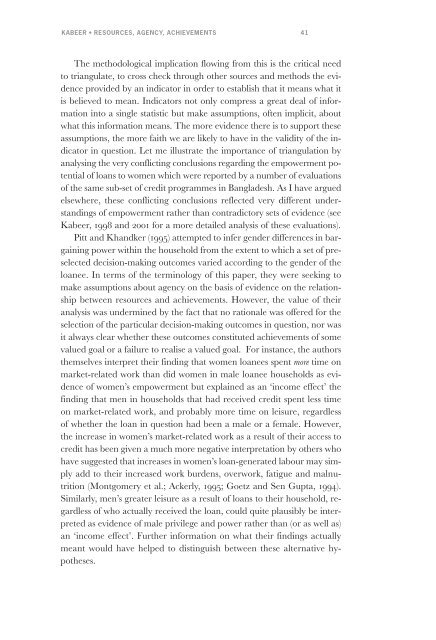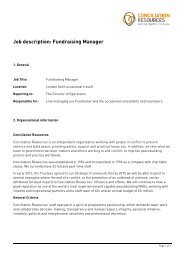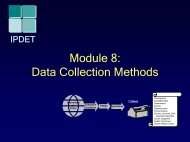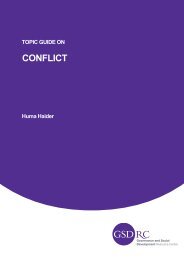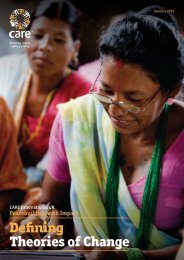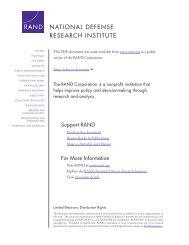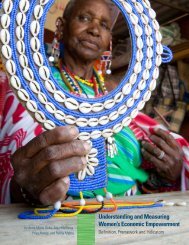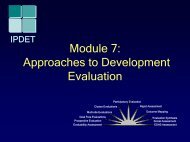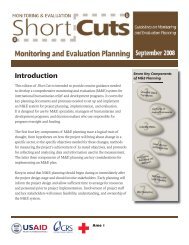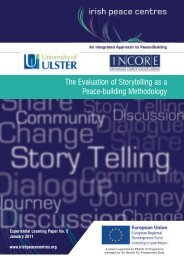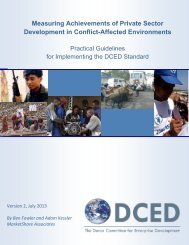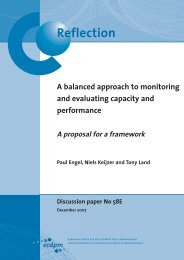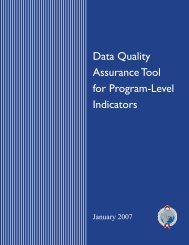Discussing Women's Empowerment - Sida
Discussing Women's Empowerment - Sida
Discussing Women's Empowerment - Sida
You also want an ePaper? Increase the reach of your titles
YUMPU automatically turns print PDFs into web optimized ePapers that Google loves.
KABEER • RESOURCES, AGENCY, ACHIEVEMENTS 41<br />
The methodological implication flowing from this is the critical need<br />
to triangulate, to cross check through other sources and methods the evidence<br />
provided by an indicator in order to establish that it means what it<br />
is believed to mean. Indicators not only compress a great deal of information<br />
into a single statistic but make assumptions, often implicit, about<br />
what this information means. The more evidence there is to support these<br />
assumptions, the more faith we are likely to have in the validity of the indicator<br />
in question. Let me illustrate the importance of triangulation by<br />
analysing the very conflicting conclusions regarding the empowerment potential<br />
of loans to women which were reported by a number of evaluations<br />
of the same sub-set of credit programmes in Bangladesh. As I have argued<br />
elsewhere, these conflicting conclusions reflected very different understandings<br />
of empowerment rather than contradictory sets of evidence (see<br />
Kabeer, 1998 and 2001 for a more detailed analysis of these evaluations).<br />
Pitt and Khandker (1995) attempted to infer gender differences in bargaining<br />
power within the household from the extent to which a set of preselected<br />
decision-making outcomes varied according to the gender of the<br />
loanee. In terms of the terminology of this paper, they were seeking to<br />
make assumptions about agency on the basis of evidence on the relationship<br />
between resources and achievements. However, the value of their<br />
analysis was undermined by the fact that no rationale was offered for the<br />
selection of the particular decision-making outcomes in question, nor was<br />
it always clear whether these outcomes constituted achievements of some<br />
valued goal or a failure to realise a valued goal. For instance, the authors<br />
themselves interpret their finding that women loanees spent more time on<br />
market-related work than did women in male loanee households as evidence<br />
of women’s empowerment but explained as an ‘income effect’ the<br />
finding that men in households that had received credit spent less time<br />
on market-related work, and probably more time on leisure, regardless<br />
of whether the loan in question had been a male or a female. However,<br />
the increase in women’s market-related work as a result of their access to<br />
credit has been given a much more negative interpretation by others who<br />
have suggested that increases in women’s loan-generated labour may simply<br />
add to their increased work burdens, overwork, fatigue and malnutrition<br />
(Montgomery et al.; Ackerly, 1995; Goetz and Sen Gupta, 1994).<br />
Similarly, men’s greater leisure as a result of loans to their household, regardless<br />
of who actually received the loan, could quite plausibly be interpreted<br />
as evidence of male privilege and power rather than (or as well as)<br />
an ‘income effect’. Further information on what their findings actually<br />
meant would have helped to distinguish between these alternative hypotheses.


